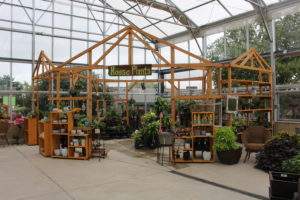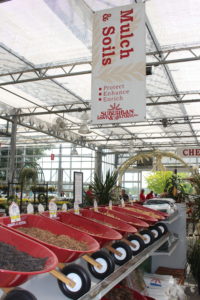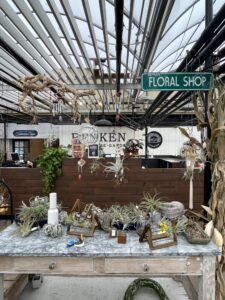
Retail Isn’t Dead; Boring Retail Is!
Let me set the stage for you. In 2019, 5,524 regional and national department, discount, sporting goods, home improvement, supermarket and other chain stores closed, while only 1,411 new stores opened (these numbers don’t take into account Main Street and other local stores, many of which also closed).
And this in a time when, according to the National Retail Federation and government data, retail sales increased 4.6 percent over 2017, with solid profits. Think about just a few of the chains that have either closed or greatly reduced their store counts — Sears, Kmart, JCPenney, Toys ‘R Us, Macy’s and Shopko — just to name a few.
Some say this was because the U.S. is “overstored.” We’re paying the price for the rapid new store growth of the 1990s and early 2000s that was built to capture the population migration to the suburbs and semi-rural areas (and the population masses are heading back to the first and second tier urban areas now). Others say that it’s not an issue of being overstored but rather that the stores built are simply too big, with excess square footage driving operating costs too high, making the stores unprofitable.
There’s some truth to both of these theories. But if you look hard at each of the struggling (or dead) chains I noted above, I think you’ll agree that all were under- invested in terms of maintenance, staffing and inventory; had weak and tired retail propositions; and had become completely irrelevant in the consumers’ minds. And, unlike their surviving competitors, none of these chains figured out a way to compensate for the 12 to 16 percent of sales that were siphoned off by online platforms.
In retail, there will always be winners and losers. The important question is: what separates one from the other? Knowing which characteristics and attributes the winners have and the causal actions and inactions of the losers is critical so we can emulate their strengths and avoid their pitfalls.
Charles Darwin, the renowned biologist, naturalist and geologist, stated “… in the struggle for survival, the fittest win out at the expense of their rivals because they succeed in adapting themselves best (and fastest) to their environment.”
Why Did It Happen?
I believe the root cause of the demise of these retailers was their complacency; a sense of satisfaction with their past successes; an acceptance of the status quo; and a refusal or unawareness of the changing world around them and their deficiencies.
Sadly, the decision makers at these companies didn’t see the challenges complacency presented (or they saw it too late to react), but their customers sure did! There are simply too many venue options available for the consumer to give them second and third chances in the hopes they might change.
The winning and surviving retailers all recognized that the consumer is now the center of the retail universe, and they can buy whatever they want, whenever they want and however they want. The consumer has the almighty power of choice. To accommodate them, retailers must be nimble, fluid and adaptive.
Innovate or …
If complacency is the common denominator for those retailers who don’t succeed, then consider that innovation is the common denominator for the winning retailers.
Simply put, innovation is a continual process of renewal and invention, new ways of doing things, new ideas, processes and services … all focused on delivering benefits to the consumer. The benefits might be financial, an improvement in their quality of life, ease of shopping or enhanced experiences. While innovation may be a real means of differentiation, it also can be short-lived because it can be quickly copied by your competitors, so innovation must be constant and continuous.
Innovation can be created internally through brainstorming sessions, inspired leadership and an openness to try new ideas (some of which might fail
or take trial and error to perfect). They also can be created externally, where you look both inside and, most importantly, outside our industry for ideas, processes and approaches that can be adapted to your business.
Stealing ideas is a quick way to innovate, but it takes a keen mind to pick out those external winners that can be modified and implemented internally.
Here are some areas of retail that lend themselves to innovation, and examples of retailers who have succeeded:
Convenience: This is one of the cornerstones of today’s consumer expectation.
- “Click and Collect” or BOPIS (Buy Online, Pickup in Store), combines online shopping and in-store delivery; an omnichannel shopping environment.
- IKEA Place, an augmented reality app that allows consumers to visualize online how IKEA products look in their personal space.
Assortments for Optimal Choice: Consumers are overwhelmed with their purchase options, especially in seasonal product categories like ours where there’s little innate knowledge, leading to purchase paralysis.
- A great read on this is the book “The Paradox of Choice” by Barry Schwartz.
- Become the product gatekeeper for your customers.
- SKU rationalization and optimization, focus on “local” and sustainable (think Trader Joe’s and ALDI)
Shoppability: Remember that physical shopping also fills social and emotional needs of the consumer.
- How can you provide your customer with new reasons to shop?
- How can you help customers to buy? (think Costco’s treasure hunt marketing strategy)
- How can you keep the customer in your store longer — e.g., demos, hands-on activities, edutainment (more time equals increased spend)?
Price-Value: Retail pricing will always be a serious component of the buying decision, but …
- At the same time, you do everything possible to discourage price-only shopping. Retailers should do everything they can to assert their low prices where they can, and assert their price-value where they cannot. (Think Target and Costco/Kirkland private label positioning strategies.)
Community: Engage with the communities you serve on social issues that are important to the well-being of the community.
- Think community gardens, Habitat for Humanity, Christmas Trees for Vets, building local playgrounds (Home Depot), solar roofs, plastics and Christmas tree recycling.
Engage and Excite
With all the myriad of products and services a consumer can purchase, and where they can purchase them, your past performance/experience will only give you the opportunity to engage with the consumer another time.
The customer isn’t so much focused on what you did for them yesterday but more on what you can do for them today and tomorrow. Unless you innovate and continually engage and excite them on a higher level every visit, they can easily explore other options.
Complacency is the easy path to take because it takes very little effort, but it has dire consequences. Innovation, on the other hand, requires hard work and the risk of failure, yet the outcome is survival. The choice is yours to make.
Retail isn’t dead; boring retail is …


















 Videos
Videos





